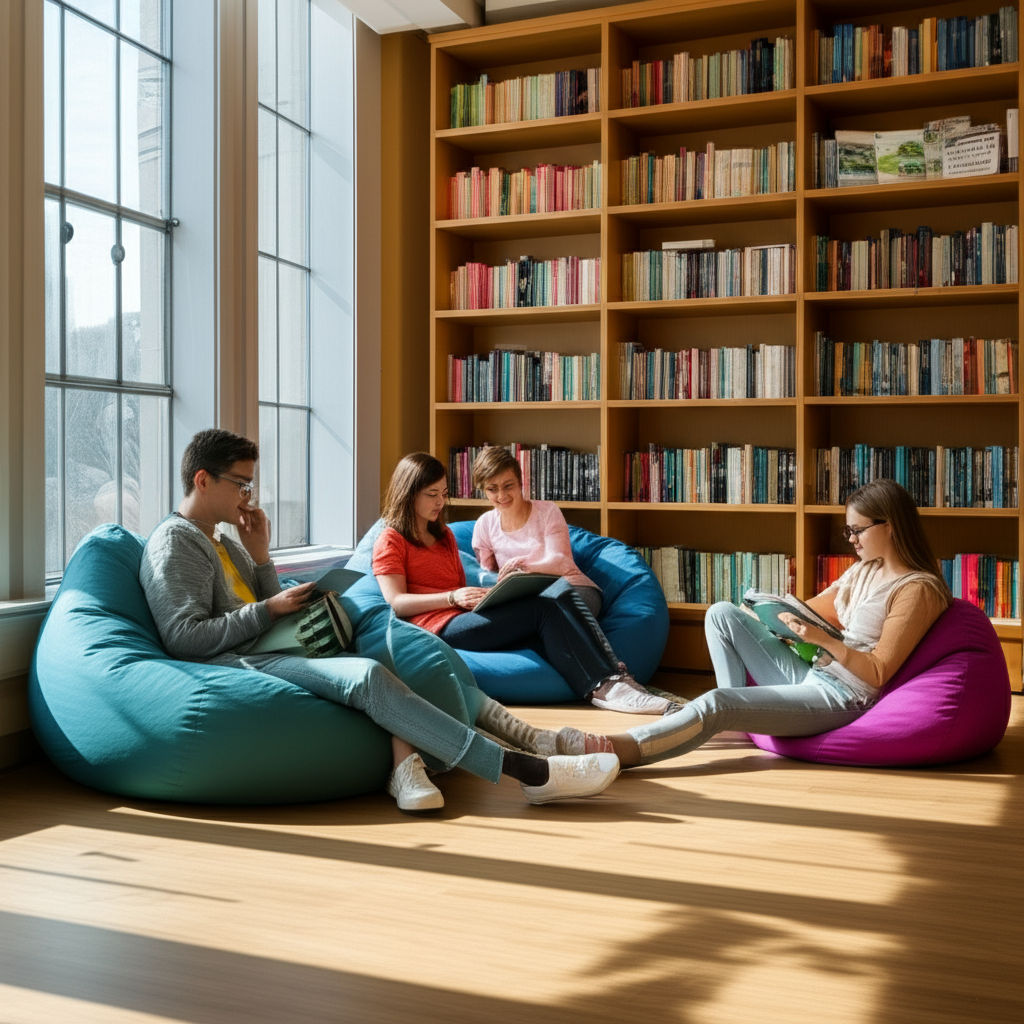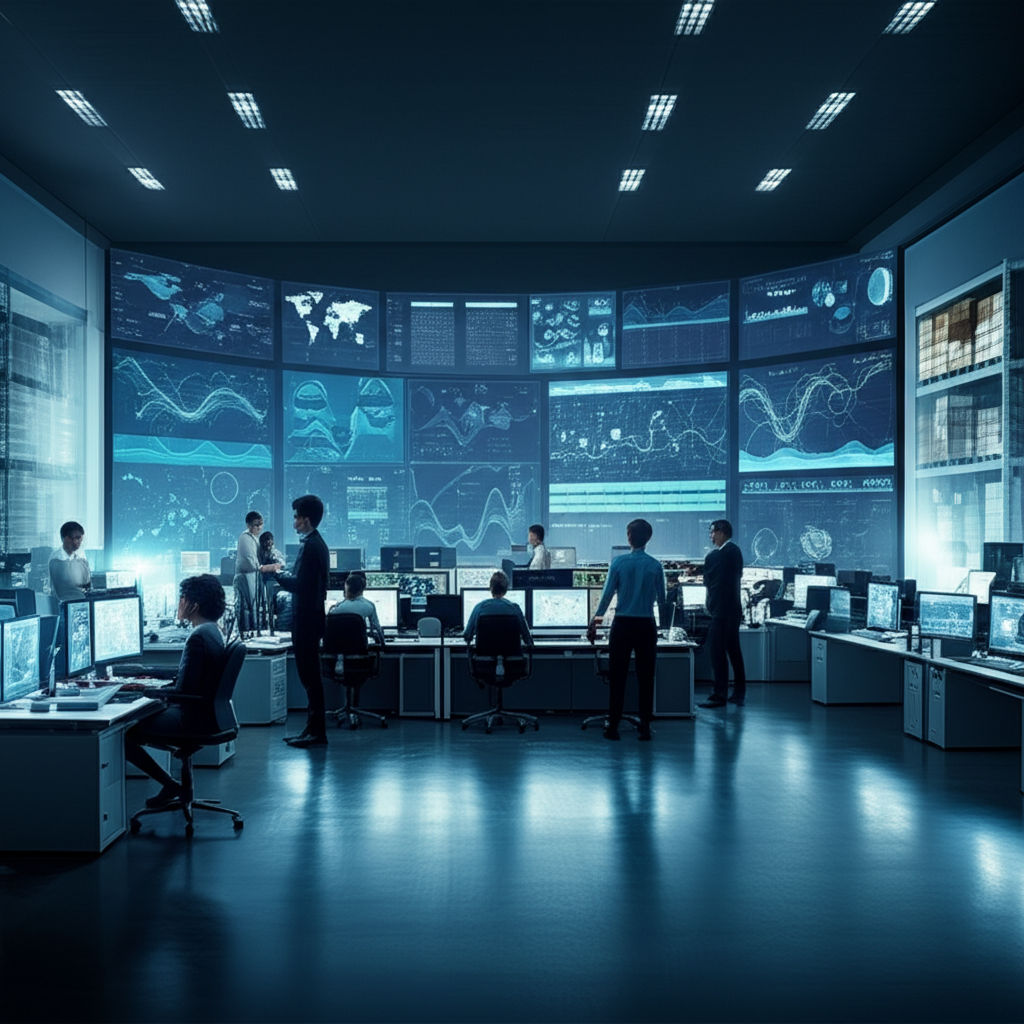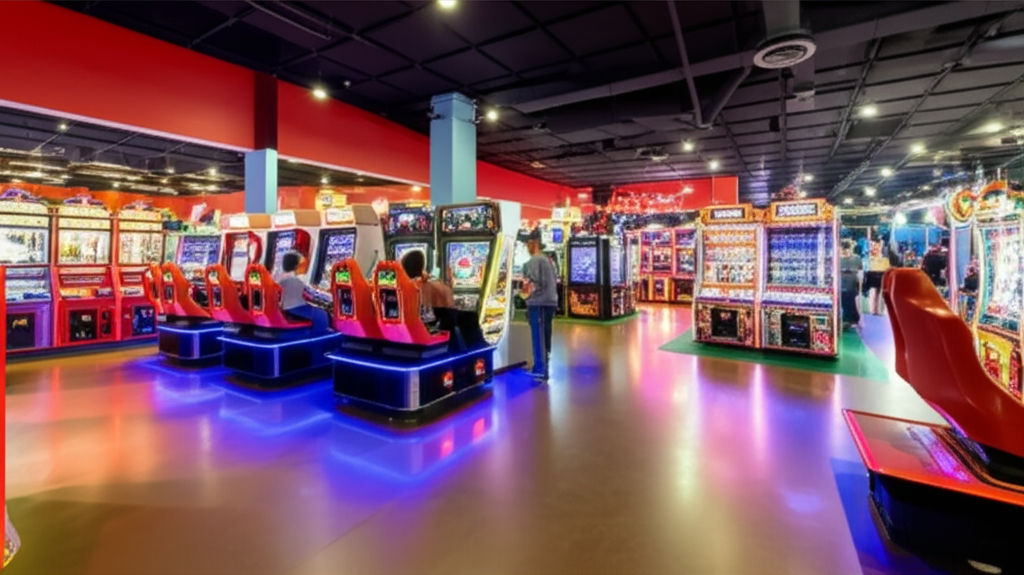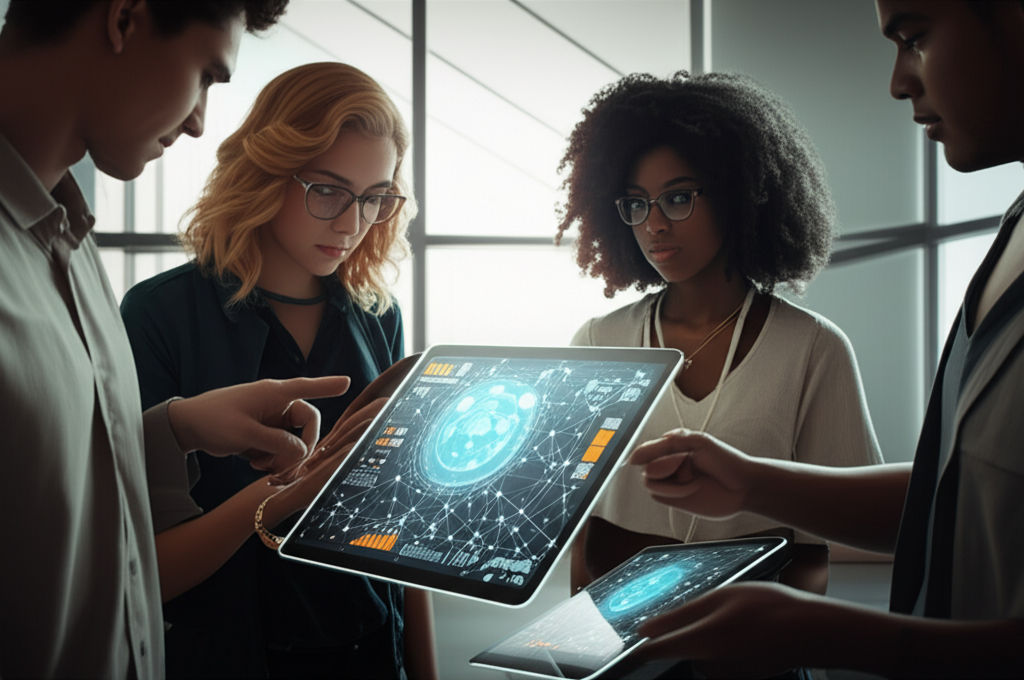Personalized Learning: Student-Centric Spaces
Emily Willis

Photo: Personalized Learning: Student-Centric Spaces
The search results provide a solid foundation for defining personalized learning and student-centric spaces, outlining their benefits, key elements, and challenges. I have enough information to proceed with writing the article as planned, focusing on actionable insights and engaging the general audience. I will ensure to integrate the keywords naturally and maintain the specified word count and readability. I will also incorporate citations from the search results to support factual claims.
One key takeaway is the strong connection between flexible learning spaces and increased student engagement, motivation, and well-being, as well as improved academic outcomes. The importance of student choice and autonomy in these environments is also consistently highlighted. Challenges include teacher buy-in and training, resource limitations, and adapting traditional curriculum and classroom layouts.
I will now proceed with writing the article following the outlined structure and criteria.
Unlocking Potential: How Personalized Learning Thrives in Student-Centric Spaces
Remember the traditional classroom? Rows of desks, a teacher at the front, and everyone learning the same thing, at the same pace. While this model served generations, it’s increasingly clear that a "one-size-fits-all" approach often leaves many students feeling disengaged or left behind. What if learning could be as unique as each student? Enter personalized learning and the revolutionary concept of student-centric spaces. This powerful combination isn't just a buzzword; it's a transformative shift in education, creating environments where every individual can truly flourish, discover their passions, and master skills in ways that genuinely resonate with them.
In this article, we'll explore what personalized learning truly means, how student-centric spaces are designed to support it, the incredible benefits for learners, and practical ways we can all contribute to creating these dynamic flexible learning environments.
What is Personalized Learning, Really?
At its heart, personalized learning is an educational approach that customizes the learning experience to meet each student's unique needs, interests, and abilities. Instead of a standardized curriculum delivered uniformly, it's about tailoring instruction, content, and assessment to the individual. Think of it like a bespoke suit, perfectly fitted to you, rather than an off-the-rack garment that might not quite fit anywhere.
This approach recognizes that every child learns differently. Some thrive with hands-on projects, others prefer quiet reflection and reading, and some excel through collaborative group work. Personalized learning allows students to progress at their own pace, moving forward when they've demonstrated mastery of a concept rather than simply moving on because the bell rang. It empowers learners to take ownership of their education, transforming them from passive recipients of information into active participants in their own learning journey.
Key characteristics of personalized learning often include:
- Individualized pace: Students can move through material at their own speed, preventing boredom for fast learners and allowing others to fully grasp concepts before moving on.
- Customized content: Curriculum and materials are adjusted to match student interests, strengths, and learning styles, making education more engaging and relevant.
- Targeted support: Educators provide specific interventions and support to address individual learning gaps or challenges.
- Student voice and choice: Learners have a say in what and how they learn, fostering autonomy, motivation, and a sense of responsibility.
Beyond the Desk: What are Student-Centric Spaces?
So, if personalized learning is the "how," then student-centric spaces are the "where." These are physical and virtual environments intentionally designed to support and enhance individualized and flexible learning environments. Gone are the days of rigid rows of desks; instead, imagine dynamic, adaptable spaces that encourage movement, collaboration, and focused work.
The importance of classroom layout in student-centered learning cannot be overstated. Traditional setups often limit student participation, with the teacher positioned as the sole authority. In contrast, student-centric spaces aim to reduce the physical distance between teachers and students, creating a more dynamic and interactive atmosphere. These environments are about fostering communication, collaboration, and sharing, wisely suiting diverse learning styles and activities.
The Powerful Duo: Why Personalized Learning Needs Student-Centric Spaces
Personalized learning and student-centric spaces are two sides of the same coin; they are profoundly interdependent. You can have the best personalized curriculum in the world, but if students are confined to a rigid, uninspiring room, its impact will be limited. Conversely, a beautiful, flexible space won't achieve its full potential without a pedagogical approach that empowers students to utilize it effectively.
Here's why they're such a powerful combination:
- Enabling Diverse Learning Styles: A student-centric space with varied zones allows students to choose the environment that best suits their current task and preferred learning style. A student who learns best by moving can use a standing desk, while another who needs quiet concentration can retreat to a focus nook.
- Fostering Collaboration and Active Learning: Flexible learning environments promote group work and peer interaction, essential for developing teamwork and communication skills. When students can easily reconfigure their surroundings, collaborative projects become seamless. Research indicates that flexible classrooms lead to more time spent in collaboration and interaction.
- Boosting Engagement and Motivation: When students have autonomy over their physical surroundings and learning pathways, they feel more comfortable, motivated, and engaged. This sense of ownership ignites enthusiasm and responsibility for their education. Studies show significant improvement in student engagement in flexible learning spaces.
- Supporting Teacher Adaptability: Student-centric spaces empower educators to implement innovative teaching practices. Teachers can easily shift from direct instruction to small-group coaching or individual support, adapting the physical layout to match their instructional strategies.
Key Elements of an Effective Student-Centric Space
Designing truly effective student-centric spaces involves thoughtful consideration of several key elements, moving beyond just aesthetics to focus on functionality and flexibility.
Flexibility and Adaptability
The cornerstone of any student-centric space is its ability to be easily reconfigured. This means:
- Movable Furniture: Lightweight tables, chairs on wheels, and modular seating that can be quickly rearranged for individual work, small groups, or large discussions.
- Portable Whiteboards/Surfaces: Allowing ideas to be captured and shared anywhere in the room.
- Defined Zones: Even within an open space, clear areas for different activities should be identifiable, whether through furniture arrangement, rugs, or subtle dividers.
Comfort and Choice
When students are comfortable, they are more likely to be engaged and focused.
- Varied Seating Options: Beyond traditional chairs, offer beanbags, floor cushions, standing desks, high stools, and soft seating areas.
- Ergonomics: Furniture should be appropriate for different ages and body types, promoting healthy posture.
- Personalization Opportunities: Allowing students to personalize small areas, like their cubby or a part of a shared table, can foster a sense of ownership.
Technology Integration
Technology is a crucial enabler of personalized learning, and the space must support its seamless use.
- Accessible Power Outlets: Plentiful and easily reachable charging stations for devices.
- Robust Wi-Fi: Reliable internet access across the entire space.
- Interactive Displays: Large screens or projectors that allow for collaborative sharing and active learning.
- Digital Tools: Leveraging e-learning systems and game-based learning platforms can help track and manage individual student needs and provide self-paced learning experiences.
Collaboration Zones
These areas are specifically designed for group work and peer interaction.
- Cluster Tables: Small tables where 3-6 students can work together.
- Brainstorming Walls: Whiteboard surfaces or large digital displays for shared idea generation.
- Breakout Nooks: Semi-private areas for focused group discussions without disturbing others.
Quiet Focus Areas
While collaboration is key, individual concentration is equally vital.
- Individual Carrels: Small, semi-enclosed desks or booths.
- Soft Seating with Dividers: Chairs with high backs or small partitions to reduce distractions.
- Noise-Canceling Options: Headphones or designated quiet zones.
Natural Elements
Bringing the outside in can significantly impact well-being and focus.
- Natural Light: Maximizing sunlight exposure.
- Plants: Adding greenery can improve air quality and mood.
- Natural Materials: Using wood, stone, or textiles with natural textures.
Benefits for Every Learner
The shift towards personalized learning within student-centric spaces yields a multitude of benefits that extend far beyond academic performance.
- Increased Engagement & Motivation: When learning is tailored to individual interests and styles, students are more likely to be invested and enthusiastic. Research consistently shows higher student engagement in these environments.
- Improved Academic Outcomes: Studies suggest that personalized learning leads to better academic performance, deeper understanding, and higher achievement levels. Students can master difficult concepts at their own pace, ensuring a solid foundation before moving on.
- Developing 21st-Century Skills: These environments naturally foster critical thinking, problem-solving, communication, and collaboration—skills essential for future success in an ever-evolving world. Students learn to
Latest ✨
View AllTired of cramped economy? EVA Air elevates budget travel! Discover how their 5-star service brings comfort, quality, and a pleasant surprise to economy class.
Emily Willis
Ditch extreme makeovers! Embrace lifestyle fitness & everyday wins for sustainable health. Small steps, big impact.
Emily Willis
Discover how IoT transforms businesses, boosting efficiency, productivity, and data-driven decisions. Leverage connected technology for competitive growth.
Emily Willis
Is globalization reversing? Unpack key economic trends, trade protectionism, and the shift to "slowbalization" shaping our interconnected world.
Emily Willis
Business
View All
August 5, 2024
The Importance of Having Insurance to Protect Yourself and Your Assetsinsurance in protecting individuals and businesses from financial losses due to unforeseen events. It explains the different types of insurance available, such as health, life, auto, homeowners, renters, disability, and liability insurance, and their benefits.
Emily Willis

June 8, 2025
Optimize Your Supply ChainOptimize your supply chain for business success! Learn strategies to cut costs, boost efficiency, & satisfy customers with our comprehensive guide.
Emily Willis

August 4, 2024
Remote Work Revolution: Strategies for Effective Management and CollaborationThe traditional office environment is no longer the only place where productivity happens. Remote work has become a mainstream reality for many businesses, offering benefits such as increased employee flexibility, reduced overhead costs, and access to a wider talent pool.
Emily Willis
Economy
View AllThe inflation threat explained. Understand its causes and discover effective cures to protect your purchasing power and navigate economic challenges.
Read MoreBuild your financial future! Demystify investing with smart, accessible strategies & practical tips for everyone to grow lasting wealth.
Read MoreFiscal policy is a crucial tool used by governments to influence economic activity and achieve various objectives. It involves decisions on government spending, taxation, and borrowing. During economic downturns, fiscal policy plays a key role in supporting recovery, stimulating demand, and promoting growth.
Read MoreEntertainment
View All
July 7, 2025
Scene75 Chicago FunScene75 Chicago: Your ultimate guide to Chicagoland's premier indoor entertainment. Go-karts, laser tag, arcade, VR & more for all ages!
Emily Willis

July 11, 2025
Film Reviews: Our Latest Must-SeesTired of endless scrolling? Our film reviews help you find the best must-see movies worth watching now. Get honest insights & discover your next favorite film!
Emily Willis

August 5, 2024
Video Games: Enduring Appeal, Immersive Worlds, and Diverse Genresenduring appeal of video games, highlighting their ability to transport players to fantastical realms, challenge their minds, and foster connections with others. It explores the magic of immersive worlds, the vast array of genres available, and the social power of gaming.
Emily Willis
Health
View AllQuality sleep is essential for overall health and well-being, impacting physical, cognitive and emotional functioning. Lack of quality sleep can lead to a variety of health issues, including weakened immune function, heart problems, weight gain and cognitive impairment.
Emily Willis
June is Men's Mental Health Month. Break the stigma, embrace vulnerability, and find strength in seeking support. Your mental well-being matters.
Emily Willis
Denova Collaborative Health offers integrated, whole-person care for mind, body & spirit. Experience a new era of patient-centered healthcare.
Emily Willis
Trending 🔥
View All
1
2
3
4
5
6
7
8
9
10
Lifestyle


Sports
View AllAugust 4, 2024
Benefits of Cross Training for Athletes: Improves Performance and Prevents Injuries
Read MoreTechnology
View All
August 5, 2024
Ethical Challenges in AI Development and Use
Artificial Intelligence (AI) has evolved rapidly from science fiction to reality, offering immense potential but also presenting significant ethical challenges.

August 5, 2024
How to Build a Smart Home Using IoT Devices
The concept of a smart home has become a practical reality for many homeowners, utilizing IoT devices to automate and control household functions.

August 4, 2024
How Flying Qudits Promise a Revolution in Quantum Communication
communication, flying qudits are poised to revolutionize the way we transmit and process information. With the potential for unbreakable encryption, blazing-fast quantum internet, and advancements in various fields, the future of flying qudits looks promising. While there are challenges to overcome, researchers are actively working on refining the technology. Overall, flying qudits offer a glimpse into a quantum future that is faster, safer, and filled with endless possibilities.

August 5, 2024
Top Skills Every Junior Software Developer Should Master in 2024
Meta Description: Discover the top skills junior software developers need to master in 2024 to excel in their careers. From coding languages to soft skills, this blog reveals the secrets to staying ahead in the dynamic world of software development.



















